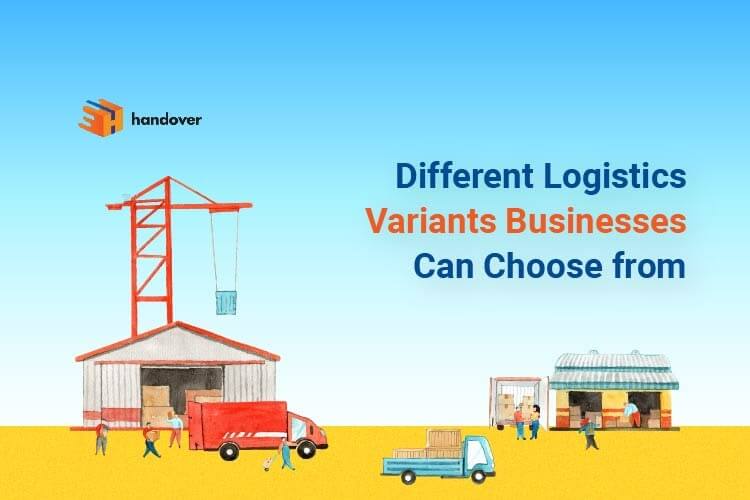Handover news
Blog
Different Logistics Variants Businesses Can Choose from

People might have heard about third-party logistics which is abbreviated to 3PL. But there are actually several other types of logistics services that logistics service companies offer to their clients.
Businesses have been using logistics services for years. The use of 3PLs specifically is on the rise for small to medium-sized businesses as the growth in online business fulfilment continues to increase. For many online businesses, operating their own fulfilment, warehousing, and distribution services is usually more costly than outsourcing logistics services.
3PLs are the most widely used delivery model by businesses. However, you may also hear about other logistics services such as 1PL and 2PL, which also help businesses operate smoothly. In this blog, we will write about the differences between 1PL, 2PL and 3PL logistics services businesses receive.
Logistics Services in Supply Chain Management
Supply chain management determines the product’s movement through various phases leading to the customers. The complexity of supply chains varies, and effective process management is essential to the company’s success. Businesses can choose whether or not to outsource any portion of the process involving supply chain management. The party logistics system describes how businesses apply outside logistics management at each level.
Organising and implementing supply chains is a critical function of logistics management for organisations when delivering goods to the customers. Companies can manage their intricate supply chains with the use of various forms of logistics. Because the functions of each level of party logistics vary, it’s critical for businesses to comprehend the distinctions between 1PL, 2PL and 3PL.
Check Out the Differences
1PL
First-party logistics is a simple method of transportation in which a business produces products and delivers them to the end users. In this method of logistics service, businesses need not outsource any of the supply chain. Instead, they handle all elements of logistics management internally, including production, transport, and retrieval, etc.
First-party logistics involves just two parties. Here the manufacturer or distributor delivers products, and the retailer or the end user receives the same. There are no other intermediaries involved in the whole process, making the process seamless.
2PL
A second-party logistics provider company helps businesses deliver their products to customers by providing transportation solutions. Examples of 2PLs include shipping lines that operate ships and hauling companies that operate vehicles. A 2PL is often referred to as a forwarder because their business mainly operates based on transportation.
By providing various modes of transportation, 2PL providers move and deliver inventory for different companies. 2PL providers do not produce goods; they only deliver them to their partnered customers.
3PL
In the case of 3PL, businesses will mostly outsource activities, including distribution, warehousing, and fulfilment, to third parties. 3PLs provide integrated fulfilment, warehousing and transportation services.
Furthermore, a 3PL service provider needs to receive, store, pack, and deliver goods from one business to another or from a business to the end user. Some 3PLs offer value-added services such as inventory management, kitting and assembly, etc.
The scope for 3PL providers is relatively vast. Some have been managing logistics for years or decades and have the expertise to make logistics operations simpler, quicker, and more cost-effective overall.
The market for 3PL providers has grown significantly due to the surge in digital transactions for goods.
3PL service providers carry out delivery activities successfully using a wide range of delivery fleets – two-wheelers, 3-wheelers, trucks, electric vehicles, etc. They are increasingly offering effective hyperlocal delivery services in Noida, Ghaziabad, Delhi, Mumbai, Chennai, Pune, Bangalore, Hyderabad and other Indian cities. They carry their business on the app and use route optimisation software to ensure speedy delivery, regaining customers’ faith season after season. With the perfect order management system and an incredible delivery support mechanism, businesses often trust third-party logistics service providers for their delivery needs.
Conclusion
There are different types of logistics services that help businesses operate smoothly. These logistics services help businesses manage their supply chain management efficiently. However, as a business enterprise, look to tie up with a third-party logistics service provider having the capabilities to deliver what you want to your customers. You can always consider collaborating with handover, a premier third-party logistics service provider with a wide range of delivery fleet and a skilled delivery staff.
